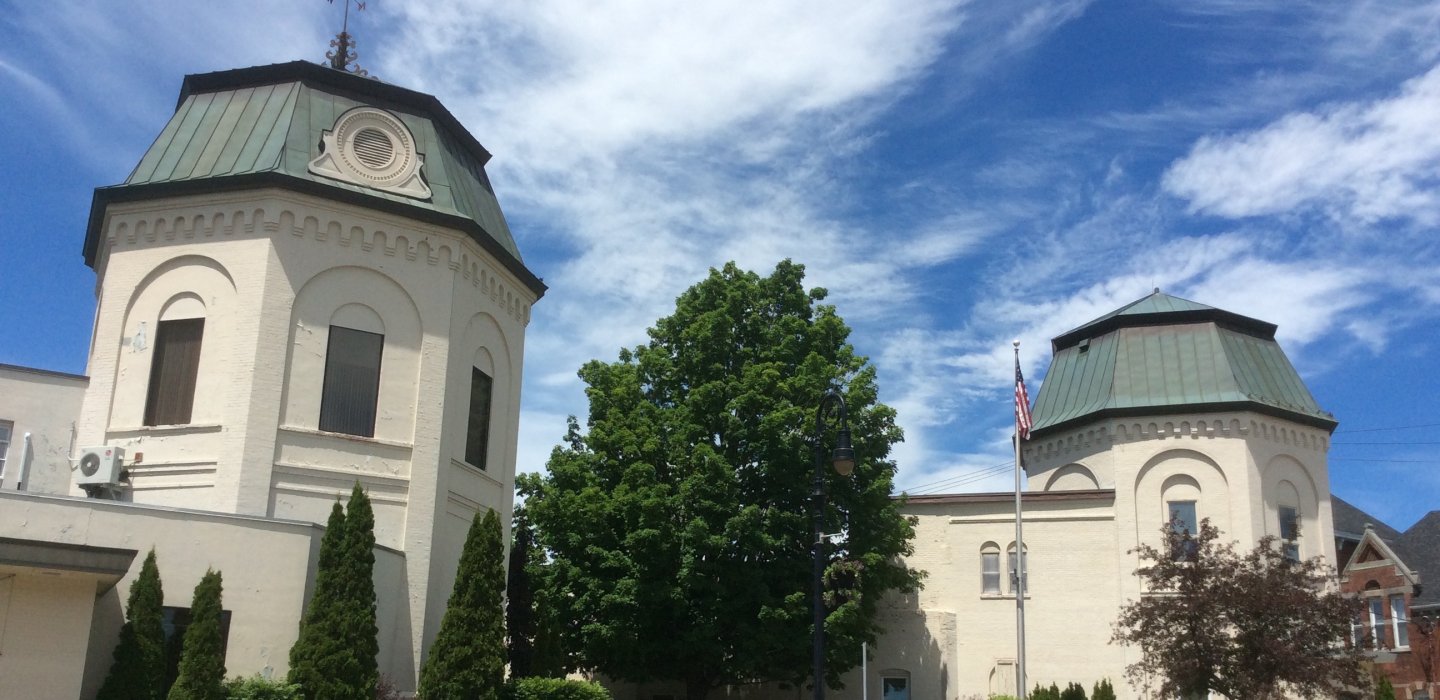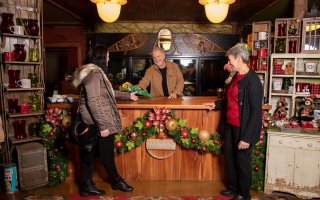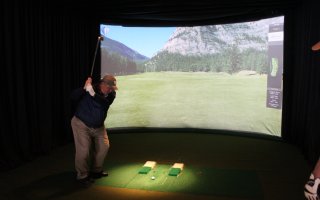
The Rutland Railroad went out of business in 1963, over a half-century ago. So it can be difficult for people living today to understand just how important railroads were.
Once upon a time, the railroad ran right through the center of town -- between the two octagonal towers just off of Main Street. The smaller tower was the passenger side, while the larger one handled freight. The prominence given to the railroads by placing them in the center of town reflected how they built Malone into the Star of the North.
The rails run through it
Trains didn't just bring goods back and forth. Trains were also how prominent people of the day got around in a timely and comfortable fashion. In 1876, local-boy-made-good William Almon Wheeler became the Vice President of the United States. Railroads let him leave his stately Malone home and head for Albany and all other places south, creating a stellar political career along the way. Back then, it was the railroad, or the horse.

As discussed in our blog post, "When Cheese Was Very Big," dairy farming was very popular in the Malone area, but the difficulty of getting fresh milk from the farm to the distant cities meant local cheese houses were the only places the milk could reach before its freshness was in danger. Once the milk was made into cheese, it kept much longer without refrigeration. But with the railroads running right through the center of town, farmers had much more flexibility with not only milk, but any of their more delicate crops.
The Rutland & Burlington Railroad was chartered in 1843, and by 1863 it had spread into the North Country and become simply the Rutland Railroad. The locomotive was the literal engine of progress. Malone's prominence as the seat of Franklin County, and its central location to the farms of the area, all combined to create a bustling commerce hub.

Then as now, beautiful buildings went up to show off the importance of the business transacted inside, and impress visitors. The two railroad towers would be the first things people saw when they got off the train.
Unusual design
The first known octagonal building is considered to be the Tower of the Winds in Athens, Greece, which dates back to 300 B.C. Octagon houses were popularized in the United States in the mid-19th century by Orson Squire Fowler, a phrenologist, amateur architect, and, very fortuitously, head of a publishing empire. In 1948 he published "The Octagon House: A Home For All, or A New, Cheap, Convenient, and Superior Mode of Building," which created a craze for octagonal structures.
As written in the Franklin County Historical Society's Historical Tour of Malone:
12 Elm Street (Community Bank)
Built ca. 1850, the brick building has twin octagonal towers at the end of each wing. The buildings were originally constructed as the Rutland Railroad ticket and freight offices, on the former site of Hiram Horton's house. The train tracks ran through the center of the building, across Elm Street, behind the Main St. buildings, across Arsenal Green, beside Notre Dame church and east out of town. The remnants of the railroad bridge across the Salmon River can still be seen from the auto and pedestrian bridge on Main Street.

The two octagonal towers would be seen by everyone visiting Malone, and soon became an iconic symbol of the town. As other forms of transport began edging out railroads, the passenger trains stopped running in the 1950s, but freight continued to be a part of the railroad until the Rutland Railroad dissolved entirely.

The idea behind octagonal buildings is that there would be plenty of light -- no dark corners -- and the ability to catch the slightest breeze through the many windows. Yet, unlike round houses, existing and conventional building materials could be used. The principle is that this design had a small surface area compared to volume, which meant lower costs for for construction and maintenance.
The "superior" design would be an advantage to the people in the building, who would feel uplifted by the aubundant air and light.

New life for the towers
Today, the space between the towers has become additional office space. It currently houses a Community Bank, the law offices of Cantwell & Cantwell, and village offices for Malone. Paul M. Cantwell, Jr. is descended from the family who owned the towers after the railroad stopped running.
The Cantwell family had a small family bank across from the railroad buildings, Citizen's National Bank. As their interests and investments changed with the changes to the area, they moved the law offices into the back part of the building, and then upstairs when the accounting firm Dragon and Benware moved to the Masonic Temple, also on Elm Street.

The space where the train had run right between the towers became a connecting space when the father & son Cantwells rebuilt it. The outside of the buildings were no longer visible brick, but were given a coat of a more modern sealant for greater insulation and ease of care.
On a recent visit, I could easily spot the distinctive shape of the lovely towers, but few traces of it could be seen inside the buildings, since the demands of today are very different from 1850.

Mr. Cantwell had a period-perfect time clock from the era, which he tinkered with until it became a working piece of art.
In another set of offices, the break room has a lively mural of the very beginning of the railroad era in Malone.

History lives everywhere in Malone. Especially if a person knows where to look.
Find some classic lodging. Indulge in our dining. Go on the Malone Walking Tour!
Andy Clermont's models featured in a forum discussion on Railroad-line.com (TOPIC_ID=36699) photos courtesy Rutlandfan.
This week in unique ADK greening news:
Opera-ting under new management






Comments
Add new comment